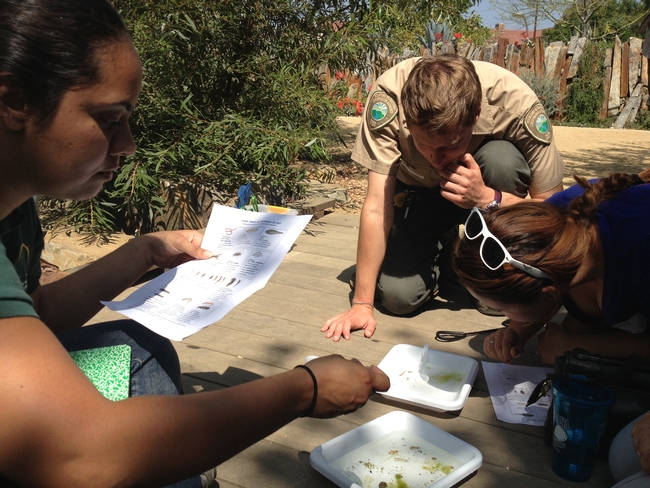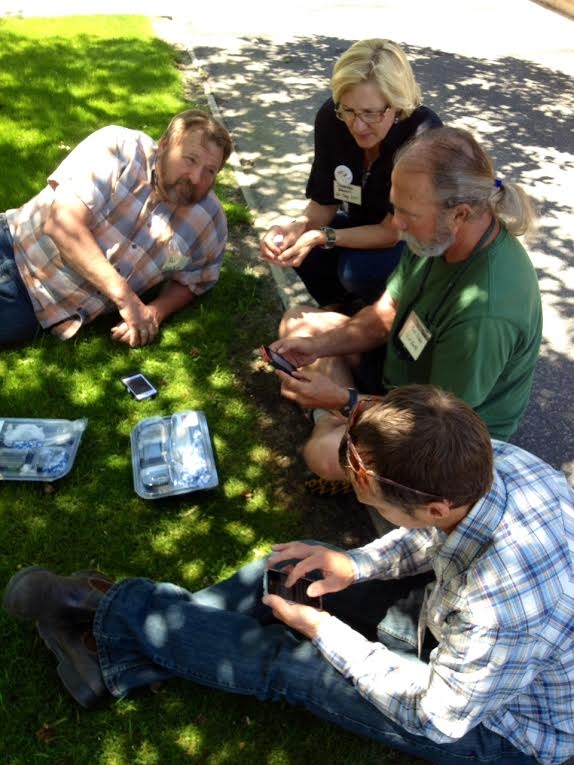"There are no passengers on spaceship earth. We are all crew" - Marshall McLuhan.

One of the first institutions to formally use the citizen science approach, Cornell Ornithology Lab, defines citizen science as projects in which volunteers partner with scientists to answer real-world questions. Another term to describe these projects, often used interchangeably, is “public participation in scientific research” (PPSR), which Cornell defines to include citizen science, volunteer monitoring, and other forms of organized research in which members of the public engage in the process of scientific investigations. We live in an increasingly connected world where the potential of citizen science to solve real-world problems is considerable.
The UC California Naturalist Program has incorporated citizen science in the training curriculum from the program's conception. One of the program's primary goals is to increase participation in resource conservation and citizen science projects throughout the state. It is not a leap to imagine how a scientifically informed public might also inform natural resource policy makers. Each partnering organization offering a California Naturalist certification course must adopt a class citizen science project so that each course participant gains experience in data collection and entry. Course participants also get introduced to the interactive, on-line iNaturalist tool, where users can record observations from nature, develop on-line species lists and journals, meet other naturalists, contribute to research-grade observations at the Global Biodiversity Information Facility, and “help scientists save the world!”
While some partner organizations already have an active go-to citizen science project, other partners may decide to choose a project from the California Naturalist Program's public, vetted online database of California citizen science and PPSR projects, the largest of its kind in this state. Additionally, each course participant must complete a service learning Capstone Project prior to certification and projects may focus on citizen science, education and interpretation, conservation and restoration, or program support. The searchable citizen science database is a useful tool to explore the myriad of citizen science opportunities, to get or stay involved in a particular field, and to keep developing new skills.
Another way that the California Naturalist Program contributes to citizen science is by participating in the development of organizations such as the new Citizen Science Association (CSA), a community of practice for the field of public participation in scientific research. CSA actively works to establish a global community of practice for citizen science, advance the field of citizen science through innovation and collaboration, promote the value and impact of citizen science, provide access to tools and resources that further best practice, support communication and professional development services, and foster diversity and inclusion within the field.
At this early stage, membership to the society 
In addition to the use of citizen science for natural resource stewards, non-profits, and science hobbyists, teachers may also use citizen science as a hands-on learning tool to meet changing standards. California's process of adapting the Next Generation Science Standards (NGSS) for K-12 schools will create new citizen science opportunities throughout the state. With an emphasis on application and real world experiences, the new standards align perfectly with citizen science. Teachers can involve students in real life science while meeting the goals of NGSS.
For the citizen scientist or organization that is unconvinced the right project for their organization's goals or interests exists, the website citsci.org will assist with creating new citizen science projects. After a simple registration process, the website provides tools for the entire research process including creating new projects, managing project members, building custom data sheets, analyzing collected data, and gathering participant feedback. CitSci.org was developed through the Natural Resources Ecology Lab (NREL) at Colorado State University as an initiative to promote citizen involvement in scientific research. Another useful resource for citizen science project outcome evaluation is Cornell Ornithology Lab's new User's Guide for Evaluating Learning Outcomes from Citizen Science. This guide includes worksheets, templates, evaluation techniques, and tips for assessing project outcomes and creating a unique evaluation plan based on best practices.